- Joined
- Feb 22, 2005
- Messages
- 1,123
Anyone into keeping poison dart frogs? I have five D. auratus. I can tell each one by their markings. They have a pecking order and their own idiosyncracies. They are becoming one of my favorite pet herps.
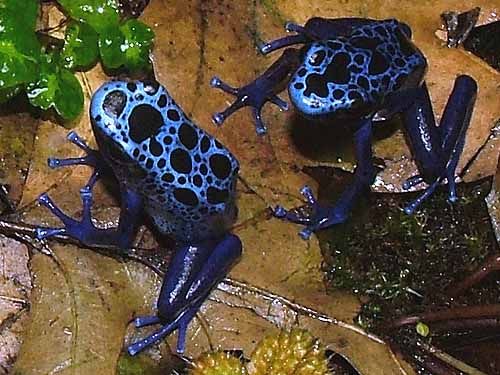
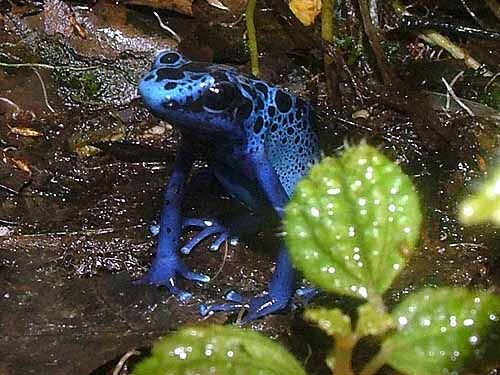
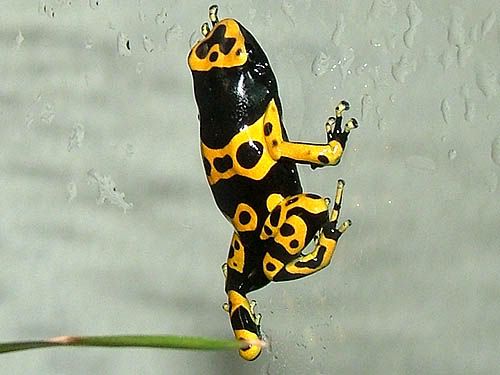
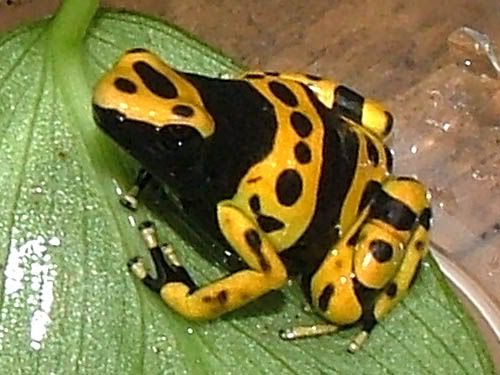
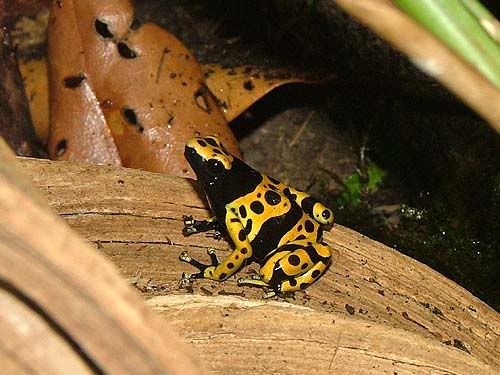
Pinhead crickets are a pain in the neck, and they don't stay small for very long. I have had good success with flightless fruitflies.BLS Blondi said:They are fun to have for sure, and yours are quite beautiful, I must add. As far as taking care of them...they live in tropical areas, and I am sure you know what that means. They need extreme humidity, as they are amphibious rain forest creatures. Keep them in a large container with LOTS of real plants (strongly reccomended--for humidity purposes) moist substrate, a small pool for them to hop into, and warm temperature (75-85F). Remember, they live in the tropics, so it has to be warm and humid. A cool set-up would be a 30 gallon tall tank with tons of broad leafed plants in topsoil topped with 2 inches of colored pebbles with an in-ground pool (shallow butter container). I have seen many set-ups like this and it looks very cool. Be creative..and you willbe very pleased (as well as the little critters). And of course, plenty of crickets for them to munch on. Good luck!
How large of a container are we talking, because most darts can be kept just fine in a 10 gal, with a smaller number of darts, of course. I do prefer larger tanks, as they allow more room for your imagination. Don't overdo the plants though, you don't want to crowd the tank, plus crowding it makes it harder to see the actual frogs. You fail to mention what kind of topsoil, it has to be organic since a dart's skin is permeable. Simply handling them is a risk, and can potentially kill them from the toxins or even oils in your skin. I wouldn't do the colored gravel either, as those are dyed...not something you want to risk, and besides it looks unnatural. There are no forests where neon pink and orange gravel abounds.Keep them in a large container with LOTS of real plants (strongly reccomended--for humidity purposes) moist substrate, a small pool for them to hop into, and warm temperature (75-85F). Remember, they live in the tropics, so it has to be warm and humid. A cool set-up would be a 30 gallon tall tank with tons of broad leafed plants in topsoil topped with 2 inches of colored pebbles with an in-ground pool (shallow butter container).
Only 5 species of wild ones are extremely toxic to the touch. I've handled D. auratus in the wild with no ill effects...but I washed my hands afterwards. Others report some numbness reactions.Elmolax said:umm lol... any safety hazards? Are CB ones non-poisonous? (due to the lack of a cetain beetle?)
What are some other things that you "totaly would love to lick"?Jaygnar said:I totaly would love to lick one of those!!!!
I would stick to lickin toads if I were you!Jaygnar said:I totaly would love to lick one of those!!!!
I'm not sure what answer you were looking for here, but I know I could make a long list if I really thought about it. :drool:Kid Dragon said:What are some other things that you "totaly would love to lick"?
David,DavidBeard said:Actually....Dart Frogs get their toxins from the plants that the termites they prey on in the wild consume. They absorb the toxic alkalines and use it as a defense mechanism.
Sure thing....Kid Dragon said:David,
I am very interested in this topic. I was under the impression termites ate wood. Do termites get toxins from eating a kind of dead wood? Could you give me a link with regards to termites and the kind of plants they eat to accumulate toxic alkalines? Thanks, KD
Here is the link I got the above quote from:Captive bred poison dart frogs (pdf’s) are not toxic. The most widely accepted theory is that the pdf’s eat insects that eat plants with alkaloids. It is the alkaloids in the plants that allow the pdf’s to produce their toxin. If you eliminate the alkaloids then the frogs do not produce the toxin.